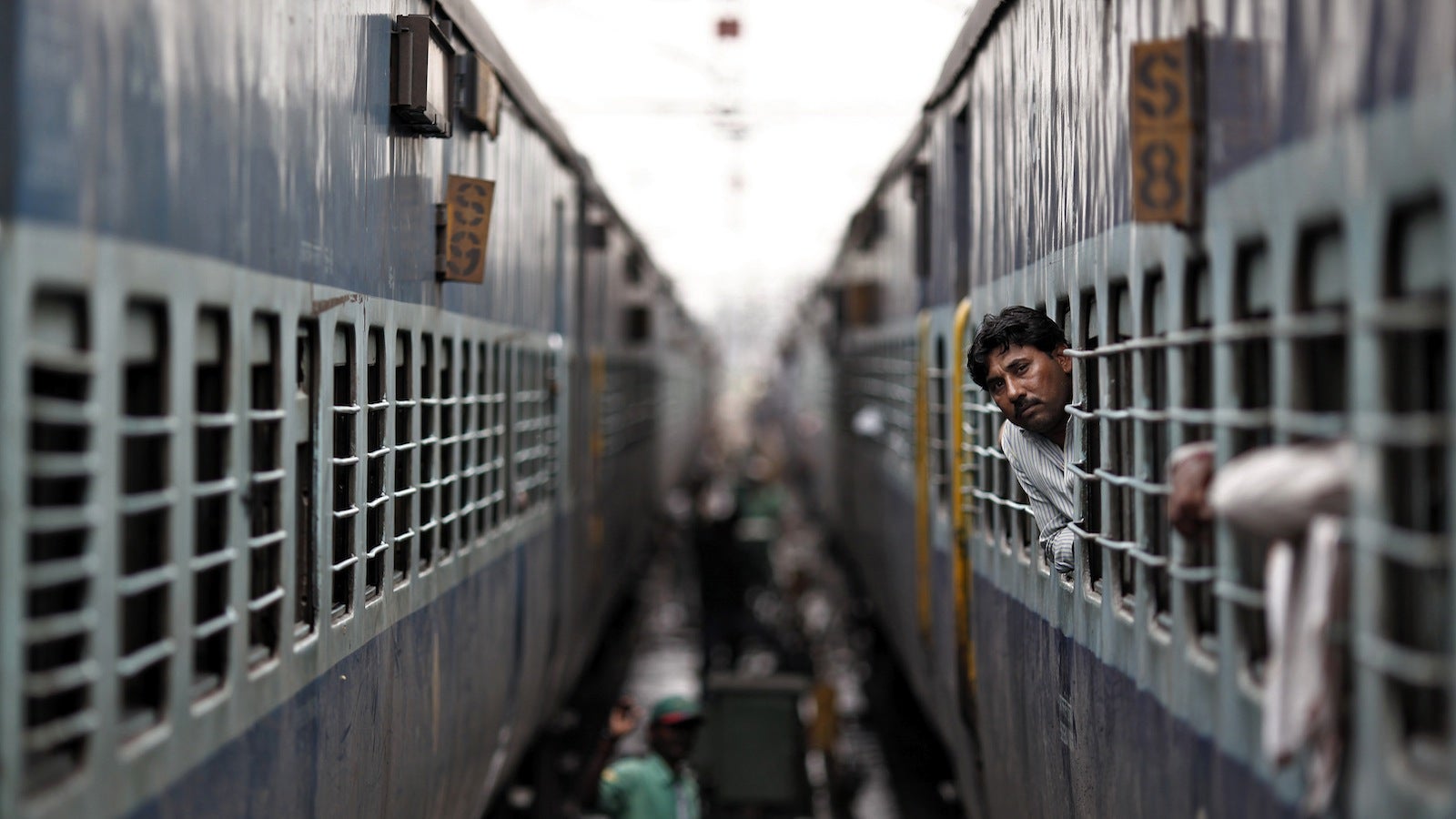How one of the world’s largest railways is using technology to reinvent itself
With a track length of 116,000 kilometre and 23 million daily passengers (pdf), India has one of the world’s largest railway networks. But this massive enterprise is bleeding money and in urgent need of reforms.


With a track length of 116,000 kilometre and 23 million daily passengers (pdf), India has one of the world’s largest railway networks. But this massive enterprise is bleeding money and in urgent need of reforms.
And in an attempt to fix the mess, India’s railway minister Suresh Prabhu is banking on technology.
“Every dynamic and thriving organisation needs to innovate and reinvent its practices,” Prabhu said in his budget speech (pdf), explaining that he intends on introducing a “spirit of innovation” in the beleaguered railways.
From bio-toilets to faster online ticket booking, the ministry of railways has tried to leverage technology to make things easier—and better—for its passengers.
Here is what Prabhu announced in his maiden budget:
Removing unmanned railway crossings
The Indian railways’ research arm—Research, Design & Standards Organisation—has been asked to collaborate with the Indian Space Research Organisation to develop a device that would provide audio and visual warnings at unmanned level crossings. The device will use geo-spatial technology to provide the warnings.
Out of some 30,300 level crossings, more than 11,000 are unmanned. Between 2011 and July 2014, close to 500 people died in accidents at unmanned level crossings.
“Our ultimate objective is to eliminate all unmanned level crossings by construction of road over bridges and road under bridges,” Prabhu said during his speech.
Mobile app and SMS
Next month, the railways will launch a mobile app for passengers to lodge complaints. This app will be initially available in Jammu & Kashmir, Punjab, Haryana, Himachal Pradesh, Uttaranchal, Uttar Pradesh, Delhi and Chandigarh. It will subsequently be rolled out nationwide.
The Indian Railways is also planning a text message-based service that will notify passengers about the arrival and departure time of trains.
Ticketing
Travelling ticket examiners—or TTEs as they are popularly known on Indian trains—will be given hand-held terminals. Currently, these ticket checkers have to manually verify the documents of millions of passengers.
“This system will help us to move towards paperless ticketing and charting and expedite finalisation of refund claims apart from saving reams of paper,” Prabhu explained.
The minister also plans to develop a multi-lingual portal for e-ticketing. The government is already testing ticket bookings through smartphones in some areas.
Wi-Fi
In his budget speech, Prabhu said that Wi-Fi is already available in all A1 and A category stations—and now the service will be extended to B category stations as well.
Stations with annual earnings of more than Rs50 crore from passenger services fall into “category A1” while those with annual earnings between Rs6 crore and Rs50 crore fall into “category A.”
Stations in “category B” have annual earnings from passenger services between Rs3 crore and Rs6 crore.
India has a total of 75 stations in “category A1,” 332 in “category A2” and 302 stations in “category B.”
In April 2013, the railways launched its Wi-Fi service on the Howrah-New Delhi Rajdhani Express. The system uses a satellite communication link; A satellite antennae is installed in one of the two power cars of the train and linked to Wi-Fi radios present in every coach.
The ministry has plans to set up Wi-Fi connectivity at 400 railway stations across India and intends to extend it to Shatabdi and Duronto in addition to Rajdhani Express.
Tracking goods
Freight traffic is one of the biggest source of income for the Indian Railways. In 2013, it earned Rs85,262.6 crore ($13.81 billion) by carrying goods.
The ministry is going to introduce radio frequency identification (RFID) technology that would allow real-time tracking of freight and freight wagons. RFID consists of a chip and an antennae that transmits a radio signal which can be used to track the movements of a parcel or a wagon.
Toilets
The government intends to install 17,000 bio-toilets in 2015.
The Indian Railways partnered with the Defence Research & Development Organisation (DRDO) to build bio-toilets. These toilets, which are fitted below the lavatories, convert human waste into water and gas (methane and carbon dioxide) with the help of a bacteria that was collected by DRDO from Antarctica.
The first train to be fitted with a bio-toilet was the Gwalior-Varanasi Bundelkhand Express in 2011. Since then, the number of coaches with bio-toilets have grown steadily, from 57 in 2011 to 17,388 currently.
Train Collision Avoidance System
India’s ministry of railways has been trying relentlessly to develop new technologies for passenger safety.
“We also propose to install Train Protection Warning System and Train Collision Avoidance System (TCAS) on select routes at the earliest,” Prabhu said.
The TCAS helps to prevent train accidents caused due to errors made by drivers. For instance, it automatically applies brakes if the driver jumps the red signal or when two trains are coming from the opposite direction on the same track. Moreover, the TCAS will help trains to run safely during heavy fog.